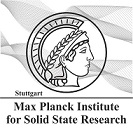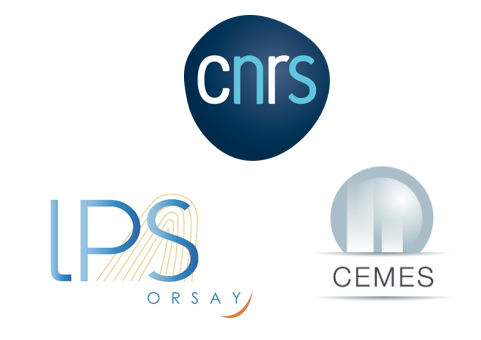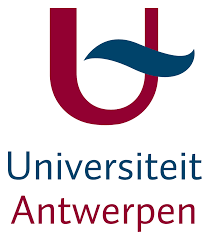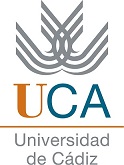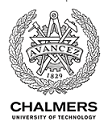The Max Planck Society (MPG) is the largest research organisation in Germany, with presently 82 research units covering all fields of research. The Stuttgart Center for Electron Microscopy (StEM) is hosted at the Max Planck Institute for Solid State Research (MPI-FKF). The StEM possesses outstanding expertise in the field of transmission electron microscopy (TEM), scanning electron microscopy (SEM), focused ion-beam (FIB) applications, and methodology development, and currently has six TEMs, including two state-of-the-art aberration-corrected JEOL ARM200Fs and the unique Zeiss SESAM for high-resolution analytical and imaging work. StEM’s research and services focus on the characterization of interfaces, functional complex oxide hetero-structures, strained semiconductors, nanostructured thin films, nanoparticles and nanomaterials, as well as molecules on 2D materials, including their structural, magnetic, electronic, and optical properties at the atomic scale. StEM’s research mission is the progress of the in-depth knowledge of the atomic and electronic structure, and of the microscopic perception of materials with respect to functionality and structure–property relationships.
Forschungszentrum Jülich is a member of the Helmholtz Association and one of the largest research centres in Europe, employing approximately 6000 staff and cooperating closely with national and international partners from science and industry. The Directors of the Institutes in Jülich are appointed professors at nearby universities. The Jülich Aachen Research Alliance pools the expertise of Forschungszentrum Jülich and RWTH Aachen University in a research partnership that is unique in Germany. The Ernst Ruska-Centre for Microscopy and Spectroscopy with Electrons in Jülich hosts one of the strongest research groups internationally in aberration-corrected high- resolution transmission electron microscopy method development and applications to problems in solid state research.
CNRS, the French national centre for scientific research, is the largest governmental research organization in France. Two laboratories of the CNRS will participate in the project: the CEMES (Toulouse) and the LPS (Orsay)
The CEMES-CNRS laboratory (Centre d’Elaboration des Matériaux et d’Etudes Structurales) covers a wide range of scientific activities aimed at the manufacturing, the understanding, the modeling and the manipulation of matter at the atomic scale. CEMES has a long history in the instrumental development of EM since the 50’s where 1.5 MV then 3 MV where built, then in the development of new in-situ TEM technics and advanced methodologies in Q-HREM and Electron Holography (GPA and Holodark software). CEMES has also developed new high brightness electron sources and more recently a very innovative time-resolved TEM based on femtosecond laser induced pulsed electron beam. CEMES is one of the worldwide leading group on time-resolved sources for EM.
The CNRS-LPS laboratory (Laboratoire de Physique des Solides) is a specialist in STEM and EELS experimentation, innovative instrumentation, theory and data analysis. LPS is internationally renowned in the field. Its fields of applications span a variety of field in material science and optics, ranging from plasmonics and nano-optics to correlated oxides and 2D materials. The laboratory has developed original EELS and cathodoluminescence instrumentation, and share close connection to EM industry (long term collaboration with ATTOLIGHT and ORSAY Physics in particular). It leads the TEMPOS project (an excellence TEM facility including a world-wide unique monochromated STEM). LPS was member of ESTEEM1 and 2, and leads the French network for Electron Microscopy (METSA) since 2016.
The Electron Microscopy for Materials Science group (EMAT) is the core group of the NANO center of excellence at the University of Antwerpen. The group has an outstanding, worldwide reputation in the field of electron microscopy for materials science and has major expertise regarding: vortex electron beams; quantification of electron microscopy data; investigation of the structure of nanomaterials and interfaces through electron diffraction and high resolution TEM imaging; electron energy loss spectroscopy (EELS) and energy filtered TEM (EFTEM); three-dimensional imaging through electron tomography. EMAT has a very broad expertise in materials characterisation with state of the art TEM ranging from battery materials, oxide electronics, semiconductor devices, solar cells, catalytic materials, soft matter and polymers, alloys, mesoporous materials, biomaterials, carbon based materials, 2D materials, superconductive materials and many more.
The combined experience in technique development and materials will be of major importance to the planned research activities where ANT will contribute, e.g. developing segmented detector STEM imaging, beam phase shaping, spectroscopic electron tomography, etc. and extending these methods to beam sensitive materials.
The University of Oxford is the world’s leading University and has been ranked 1st in in the 2017 and 2018 list of Global Universities. Oxford's research activity involves more than 70 departments, over 1,600 permanent academic staff, more than 3,500 research and research support staff and over 4,600 graduate research students. In 2016-17,46% of research income (£598 million) came from external research sponsors.
Within the division of Mathematics, Physical and Life Sciences the Department of Materials is rated as one of the leading departments in the UK and hosts the internationally recognised Electron Microscopy group. The use of electron microscopy in the Department of Materials spans a wide range of subject areas, including ceramics, semiconductors and superconductors, catalysts and carbon-based materials.
The University of Cambridge is a one of the world’s oldest and most successful Universities, with an outstanding reputation for academic achievement and research. It was ranked first in the 2011 QS World University Rankings and its graduates have won more Nobel Prizes than any other university in the world. The Department of Materials Science and Metallurgy has over 30 academic staff, approximately 50 administrative, technical and other support staff, and around 80 postdoctoral researchers, 150 postgraduate students and 20 visiting scientists at any time. Its research falls into six themes: structural materials, device materials, materials chemistry, clean energy and sustainability, medical and pharmaceutical materials and materials characterisation (particularly electron microscopy).
The Jožef Stefan Institute (JSI) is the leading Slovenian research organization with 930 employees. (46 % PhDs, 32 % PhD students and Engineers and 22 % Technical staff and administration). It is organized into 27 departments and centres and covers a broad spectrum of research in natural sciences and technology including the fields of physics, nanoscience, materials science, chemistry, biochemistry, electronics and environmental science. The Department for Nanostructured Materials (K7) at the JSI employs 42 researchers (23 PhDs, 15 PhD students). The main focus of research is processing and properties characterisation of nanostructured materials for various technological applications (i.e. varistors, thermoelectrics, dielectrics, materials for photovoltaics, hard-coatings and catalysts, biomaterials, engineering ceramics, sensors, etc.). The K7 group is also managing the Centre for Electron Microscopy Microanalysis (CEMM). The main equipment in the field of electron microscopy, available through the CEMM includes 3 transmission, 3 scanning electron microscopes, FIB and specimen preparation equipment.
Graz University of Technology , representing 200 years of research and teaching, is currently organized into 7 faculties active in various disciplines of natural sciences and technology. It has more than 13500 students in the current academic year. The FELMI (Institute for Electron Microscopy and Nanoanalysis, member of the faculty of Physics and Mathematics) is a joint research unit between TU Graz and ZFE and covers a wide range of scientific activities in the field of advanced microscopy of materials and biomaterials. It is Austria´s leading institution for materials microscopy and works in close affiliation with the Graz Centre for Electron Microscopy (ZFE), which holds many collaboration activities with European industry. This constellation of academic research, strongly tied to technology enabled by unique research infrastructure, provides an ideal basis for the joint research as well as networking and user access level activities, as laid out in the project.
University of Zaragoza (UNIZAR) was founded in 1542 and presently consists of 11 faculties, 1 engineering school, 6 technical schools, 55 departments and 5 research institutes. More than 30.000 students (40% in science and technology) are attending 48 graduate and 51 post‐graduate programs covering experimental sciences and technological sciences, health sciences, social sciences, humanities and arts. The execution of the proposed project will be developed at the Advanced Microscopy Laboratory (LMA), a National Research Facility for Advanced TEM located at the Nanoscience Institute of Aragon (INA, http://ina.unizar.es), which was founded in 2003 at UNIZAR with the aim of promoting multidisciplinary research activities in Nanoscience and Nanotechnology.
The University of Cádiz (UCA), through different initiatives, has resolutely supported the development of the fields of Materials Science and Electron Microscopy. Thus, it counts with its own Electron Microscopy Facilities which promotes the continuous improvement in equipment resources and technical staff qualification issues, to ensure high quality services.
The “Structure and Chemistry of Nanomaterials” Group at the University of Cádiz, working at its Faculty of Science, has a more than 20-years-long expertise in the application of Transmission Electron Microscopy techniques to the atomic scale investigation of nanoparticles; mostly on materials with applications in Energy and Biomedicine.
AGH University of Science and Technology (AGH-UST), Krakow is a high-ranking Polish university with 16 faculties, over 4000 staff members and roughly 40 000 students. The International Centre for Electron Microscopy for Materials Science (IC-EM) is a non-faculty unit of the AGH-UST acting in co-operation with foreign partners. The main activity of the IC-EM aims to the application and tuning of new methods of electron microscopy to materials investigations, mainly to quantitative characterization of the micro-nanostructure of innovative materials for tailoring it to desired properties. The comprehensive TEM sample preparation laboratory and the newly acquired advanced electron microscopes enable the in-depth microstructure characterisation down to atomic level.
Chalmers tekniska hoegskola (Chalmers University of Technology) was founded in 1829 and conducts research and education in technology, science, architecture, martime engineering and management. It has been involved in EU funded research projects and programmes since 1989 and is on average involved in approximately 160 projects in different EU programmes per year. There are 9 Areas of Advance that constitute platforms for collaborations between different departments for progress in important fields of research. Of particular importance for ESTEEM3 are the Areas of Advance in Materials Science, Information and Communication, Energy, Nano and Life Science Engineering. The near research environment for ESTEEM3 at Chalmers also includes the Chalmers Materials Analysis laboratory (CMAL) with state-of-the-art instrumentation for material characterisation including electron microscopes and the Nanofabrication laboratory cleanroom facility.
The Norwegian University of Science and Technology (NTNU) is a public research university, the largest in Norway. NTNU has the main national responsibility for education and research in engineering and technology, and is well known for its close collaboration with industry, and particularly with its R&D partner SINTEF, which provided it with the biggest industrial link among all the technical universities in the world. The Department of Physics hosts one of the two nodes for the national infrastructure in TEM, called NORTEM. The Centre offers research and services in a broad spectrum within TEM including micro-and nanostructure characterization of (light) metals, semiconductor nanowires, functional oxides, semiconductors, nanostructured thin films, nanoparticles and nanomaterials.
The National Research Council (CNR) is the largest public research institution in Italy. CNR’s main mission is to perform research in its own Institutes, to promote innovation and competitiveness of the national industrial system, to promote the internationalization of the national research system and to contribute to the qualification of human resources. The Institute for Microelectronic and Microsystems (IMM), part of the Department of Physical Sciences and Technologies of Matter of CNR (DSFTM-CNR), hostthe largest center for Electron Microscopy in Italy: the Beyond-Nano microscopy labs, which goal is focused on the characterization of nanomaterials, including their structural, electronic, and chemical properties at the atomic scale, making use of the expertise in advanced TEM techniques.
Attolight's purpose is the development, marketing and distribution of measuring devices and other related equipment and software. Attolight firmly believes in the potential of CathodoLuminescence (CL) and aims at establishing the technology as a standard in-line inspection method in semiconductor industry.
The company's core expertise lies in the applications of CL, advanced data analysis, and design & production of integrated CL tools. Attolight is a company with global presence with systems in Europe, Asia, and North America. The Company is headquartered at the EPFL Innovation Park where the Attolab is located as well.
CEOS is a private small enterprise located in Heidelberg, Germany with currently 44 employs. Research is carried out on new designs of advanced components for high resolution electron microscopy. These components are calculated, designed, built and tested here in Heidelberg. For these purposes, CEOS has mechanical and electronics workshops, a drawing office and several laboratories. To carry out these tests and the evaluation of new electron optical modules of prototypes CEOS has access to about 5 TEM/STEMs which are installed at CEOS premises.
DENSsolutions, founded in 2012 as a spinoff from TUDelft, is currently active in the field of in situ electron microscopy. The company focuses its activities into the development of advanced sample carriers able to stimulate samples and observe dynamics. The expertise on sample carriers and holders design will be made available to the partners with the goal of solving scientific problems related (but not limited) to health, energy and environment.
NanoMEGAS SPRL is a company leader in electron diffraction and electron crystallography field with TEM microscopy. NM provide its customers solutions regarding TEM orientation imaging and strain enabled at the nanoscale level applying precession electron diffraction (PED). NM has intense research activity in the field on TEM electron microscopy and precession electron diffraction. NM has expertise in the field of scanning PED diffraction (4D STEM techniques) and low dose using last generation Direct electron detectors (Medipix) to generate phase maps of beam sensitive materials and solve ab-initio complex structures using 3D diffraction tomography techniques.
Quantum Detectors Ltd is a spinout company from STFC and Diamond Light Source which commercialises photon and electron detector systems. Quantum Detectors has a proven track record in undertaking all aspects of the commercialisation process, from developing proof of concept or prototype systems right through to fully supported products. QD has specific experience in the field of electron microscopy, with its Merlin Medipix3 detector system being deployed in transmission electron microscopes. In conjunction with our ESTEEM partners, we intend to drive our electron detector development forward to meet the needs of the EM community.
Euronovia is a French consulting company specialized in the management of European funding projects, as well as in all related communication and dissemination activities. Euronovia employs highly professional consultants with different backgrounds so as to offer transectorial and transdisciplinary skills.
Euronovia is also specialized in communication and dissemination activities (French NCP’s newsletters production, community building, inter-clustering activities) to promote at a wider level the achievements of European funded programmes and projects. In addition, Euronovia provides support to exploitation activities to ensure an efficient use of the project results.
Euronovia has a strong expertise in low maturity research projects as well as in SME’s innovation projects’ management. Therefore, Euronovia is used to deal with different stakeholders’ concerns such as SMEs, large manufacturing groups, universities, research institutes, clusters, etc.

